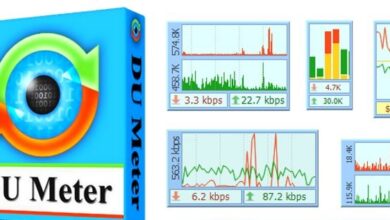10 ways to improve your testing skills in 2022

Life is a race! If you don’t strive to improve and excel in your skills, you will be left behind. Technology progresses at a dizzying rate every year, bringing new ideas and ground-breaking efforts to the forefront. In this emerging era of technology, demand for well-equipped technocrats is increasing exponentially. To keep you in pace with the progressive zone, let’s delve into how you can start implementing to improve your testing skills in 2022. This blog helps you avoid the pitfalls of lagging, enriching you with higher versions of software testing skills. Let’s prepare for a world that is going to be tech-savvy!
What Is Software Testing?
Software testing is validating and verifying software based on the artefacts and behavior through which it executes a particular task. The accuracy of the outcome obtained defines to what extent the application performs the desired set of functions that you assign. It assesses the overall product usability, security, performance, and compatibility of the software application.
The recent technology involves dealing with accelerated product releases and QA trends, emphasizing low-code/no-code testing tools and CI/CD tools. The development process involves real-time changes and updates; testing is an ongoing activity throughout the development cycle.
What Are The Core Aspects Of Software Testing?
Implementing effective QA management that provides tools and methodologies for building bug-free products is the way to create high-quality software. Software quality management is a broad term that encompasses two key components:
- Software quality assurance
- Software quality control
Software quality assurance is a part of quality management. It consists of a predetermined set of organizational actions. These actions aim to improve the software development process by introducing quality standards to prevent errors and bugs in the product.
In short, software quality control, termed SQC, is a component of quality management that consists of activities to meet quality standards. QC refers to product-oriented activities that certify software products for quality before release. Software quality assurance governs the software quality control process.
Why Is It Essential To Improve Your Testing Skills In The Software Domain?
On analyzing the latest modules, poor quality assurance has become one of the main reasons behind software failures. The software tests contribute to a high level of quality assurance, preventing the delivery of low-quality goods.
For example, despite prioritizing the development process and code production, the first proper social newsreader failed because the program was bug-infested and full of mismatches. So, even if you have years of expertise, you will need to concentrate on improving your testing abilities if you cannot detect issues in the system testing. The need for testing scales is on the rise, thanks to the expanding trend in the software testing sector, which has resulted in various software testing training facilities.
10 Critical Ways To Improve Your Testing Skills!
Improving your testing skills is a must if you want to survive in the competitive world of technocrats. We have listed the top 10 ways that would help you improve your testing skills in 2022. Let’s have a look!
1. Getting Hands-On Agile Methodology
The tested efficiency measures the quality of work and meeting the deadlines. Similarly, as the complexity of the software development process grows over time, so must the software testing approach. So, to meet the delivery deadlines, testers should learn Agile and DevOps methodology. Agile testing becomes more effective when software product development divides into multiple deliverables.
Agile methodology and DevOps take care of cross-functional teamwork that includes development analysis and a QA process. These methodologies produce high-quality products in a shorter period, and they are currently working on new releases. The team can incorporate feedback from end-users, allowing for the continuous progress of the software product.
2. Getting Familiar With The Automation Testing
With the advancement of modern technologies, it is no longer advisable to rely solely on manual testing. We strongly recommend using automation testing to improve the quality of your software. Automation scale can assist testers in browser compatibility performance, and integration with good communication skills can deliver the project with greater accuracy. Moreover, it has evolved as one of the key trends in recent times. There are numerous testing tools available; keep up to date with these automation tools for various testing types.
You can prefer automation testing in cross-device and cross-browser testing, regression and smoke testing, load testing, and performance testing. However, different automation tools have additional capabilities and drawbacks; for example, open-source tools that require the tester to have coding skills and a good understanding of Java, Python, and other scripting languages.
3. Knowing What And When To Automate
Knowing how to use a test automation tool is not enough; the tester must also know what to automate and when. Automated testing is only functional when the test cases are repeatable; for example, automating regression test cases can be advantageous. Manual testing, such as exploratory testing, which requires real-time and critical thinking, should be performed.
In-sprint automation allows for faster execution times and elevates the tester’s role by allowing him to complete testing for multiple builds in a single sprint. A no-code testing tool provides a drag-and-drop feature that will enable testers to create test cases without needing advanced coding skills. Additionally, test cases that require subjective validation should delegate to manual testers.
4. Getting Acquainted With SDLC Management Skills
To easily understand the application development tasks and plan testing cycles, Quality testers should learn software lifecycle management skills. Further, it also assists the QA teams in structuring and managing the testing process. An in-depth understanding of the SDLC cycle aids in anticipating complexities in the application, allowing developers to take the appropriate precautions ahead of time.
Your test automation frameworks, continuous integration/delivery tools, bug tracking tools, and other software solutions are all integrated on these platforms. The tester is the customer’s voice in the SDLC. Knowing what the end-user expects from the software product helps the product owner and development team focus on the right things by allowing for early clarity of the intended outcome.
5. Importance Of Creating A Comprehensive Test Plan
The test plan consists of detailed documents that describe the test strategy, schedule, deliverables, budget, and resources needed to test a software product. It includes what testing entails for the organization and the objectives that require testing. The use of general software testing standards and project criteria provides a clarified image to a tester.
The test methods and metrics enable you to assess testing efficiency and ways to improve testing processes. This skill aids in tracking requirements changes, checking test processes, tracing deviations, and reporting and logging work.
6. Work On Your Test Strategies
A tester must specify the objectives of the tests that they need to perform. The test strategy must aid in risk management. Your test strategy must abide by the company’s processes, standards, and test management tools. The Identifier of a test plan serves as the basis of the test strategy.
While working on a test strategy, you must include the items for testing and the associated problems with software risk. The features that need testing and those that do not require testing must be analyzed and classified accordingly. The test strategy must abide by the criteria for suspension and passing or failing an item. Further, it also involves the environment for testing (hardware, software, tools) and the risks and approvals.
7. Explore The Exploratory And Ad Hoc Testing
Exploratory and ad hoc testing is a method of investigating a product without predetermined test cases. It determines how the product works by taking testers’ experience, intuition, and imagination to find bugs. But through this process, the system can be evaluated quickly, resulting in immediate feedback and the identification of areas for further testing.
The primary difficulty with exploratory testing is that it is difficult to document its execution, replicate failures, and report defects. However, both the testing methods increase testing coverage, improve user experience, and generate new testing ideas.
8. Implementation Of User Acceptance Testing
End-user testing, also known as user acceptance testing, is typically performed at the end of the software development process. It primarily deals with engaging end-users to test the application software that can aid in the discovery of bugs that would otherwise go undetected. It demonstrates if your software is production-ready. It also provides user feedback to the developers during and after the production stage.
At the pre-release stage, alpha and beta testing carry out—contract Acceptance Testing determines whether the developed software meets contract requirements. Regulation Acceptance Testing ensures that software meets legal requirements. The Operational Acceptance or Production Readiness Testing determines whether or not an app is ready for production and use. Without access to the internal code, black-box testing examines software functionality.
9. Reporting And Documentation Of The Software
Technical documentation in software engineering is an umbrella term that refers to all written documents and materials related to the development of software products. It describes the developed product and gives instructions on using it for various tasks. So, to be proficient in testing skills, you must also know the reporting and doc of software.
This reporting practise provides the necessary transparency to top management. The report and document assist the team in locating bugs earlier in the development cycle. Testers should be able to generate test reports manually or use tools that can render comprehensive test reports built-in.
10. Fluency In Programming Skills
A tester must be proficient in programming play and the understanding of and around working principles to locate the bug at the programming level. The location of bugs helps reduce the time required and improve application efficiency.
When a code is updated, it can generate new test cases. Predictability of errors and bugs in new builds the ability to conduct regression testing throughout the software development lifecycle.
Wrapping Up
Enhancing the software’s functionality will have the most significant overall influence on your firm’s financial success. We advocate not skimping on testing when it comes to controlling your work processes since the cost of mistakes might be prohibitive.
Regardless of experience level, testers should constantly strive to learn and improve their software testing skills and knowledge. Whether self-learning or participating in a training program, you should continuously learn innovative approaches, methodologies, and processes to improve testing performance and keep applying the new skills to stay ahead of the competition. Nevertheless, it is wise to start enriching yourself with these ten modules to improve your testing skills in 2022.
When transferring tests from a local Selenium Grid to a cloud-based Selenium Grid, an engineer who works with the Selenium framework on a regular basis is constantly worried about the impact of changes. When assessing technologies to speed up Selenium Testing, automation engineers have the same worry. That’s when LambdaTest can help you. Such concerns are diminished by LambdaTest. It may be used to do visual cross-browser testing on a variety of devices and operating systems. The platform provides full-page screenshots of web pages throughout the test cycle(s), which is a great resource for visual testing. Parallel testing with LambdaTest reduces testing time by allowing automated tests to run simultaneously across several browser and platform combinations.
Vixit Raj is Product Growth and Marketing Specialist in LambdaTest : The Cross Browser Web App Testing Platform. An E&C engineering background & digital marketing domain experience of 5+ years has aroused his interest towards learning more about latest technology advancements, product marketing, coding and testing.



